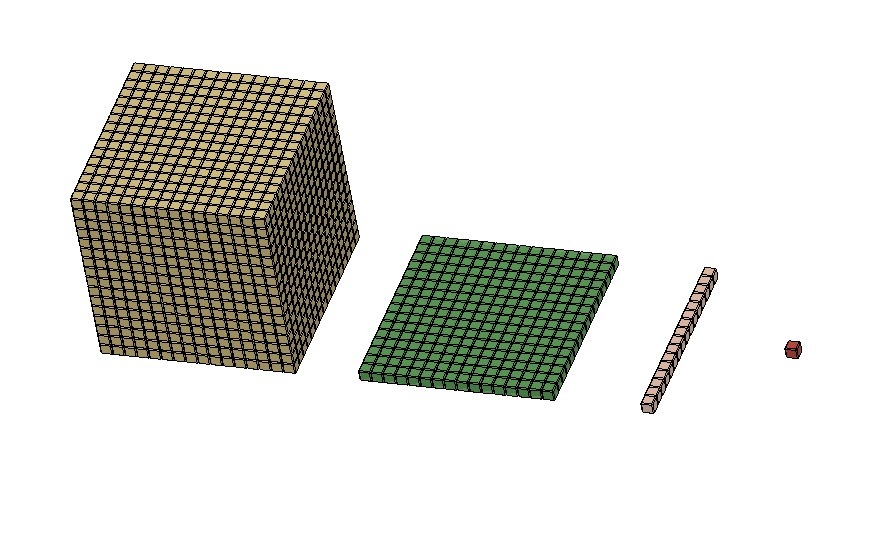
Base-16 or Hexadecimal Blocks for Number Sense
thingiverse
Base-16 or Hexadecimal Blocks for Number Sense The base-16 or hexadecimal numeral system is commonly used in computer science for its convenience. Sixteen symbols are employed: 0, 1, 2, ..., 9, A, B, C, D, E, F, where F(hex)=15(decimal)=1111(binary). The 16-cube's size becomes too big, but it remains visually appealing to see the meaning of 1 in a number like 1000(H). Even though the unit cube is 8mm^3 and the 16-cube is 124mm^3, printing one takes about 100 hours, uses 0.6 kg of filament at 0% infill and 0.2mm resolution. This has to do with design choices. I started with a unit cube and then built patterns around it to highlight "units." To conserve filament, one could start with a large cube and make marks around the cube. I've included a 16-cube based on such a design. Using 0% infill, it takes 9 hours and uses 37 meters of filament. Alternatively, please scale all the blocks down. The impact of these blocks depends on how they are used to communicate and model mathematical practices. After Base^3, it becomes physically impossible to use blocks to show the meaning of a base in a positional value number system. Among the files are (Base = 16, unit = 8mm ^ 3): Note that in a number or numeral system other than base-ten, words like "ten," "hundred," and "thousand" can be confusing, even though some people use them. A specific reference such as 5^2 is much clearer. 1. Unit (16^0 = 1) 2. Ten (16^1) 3. Hundred (16^2) 4. Thousand (16^3) + Another Version that saves filament in a new design Have fun!
With this file you will be able to print Base-16 or Hexadecimal Blocks for Number Sense with your 3D printer. Click on the button and save the file on your computer to work, edit or customize your design. You can also find more 3D designs for printers on Base-16 or Hexadecimal Blocks for Number Sense.
